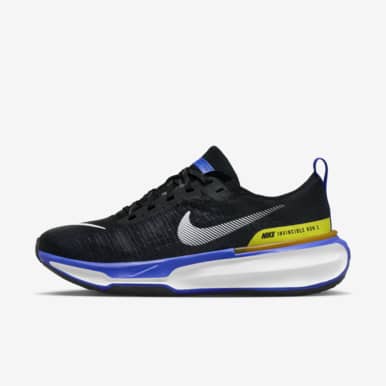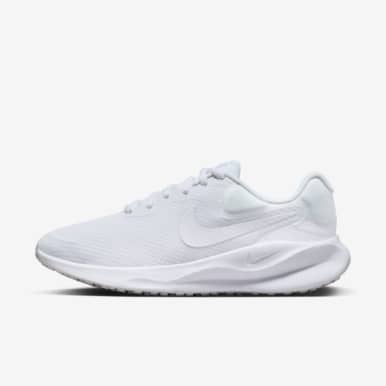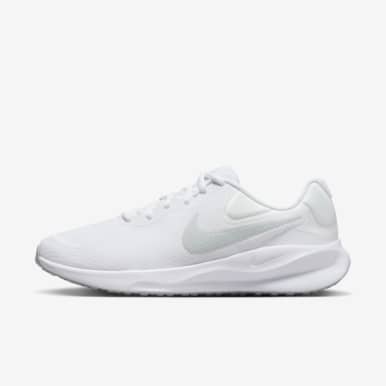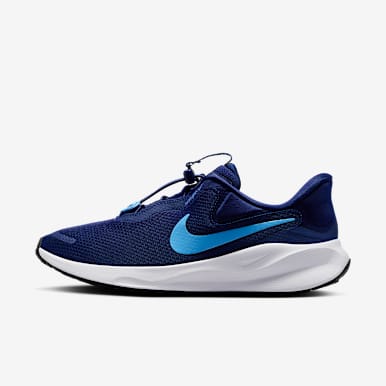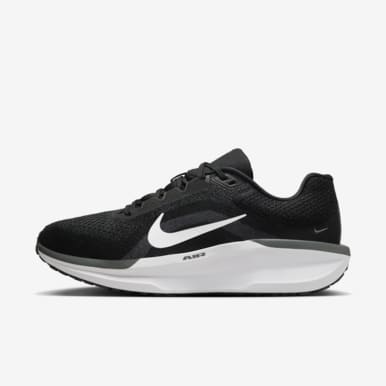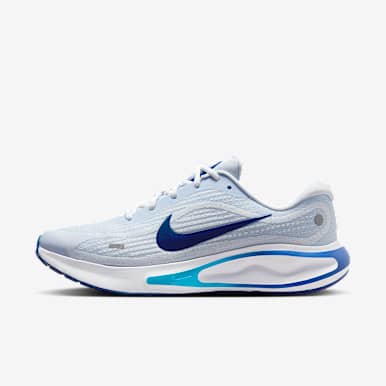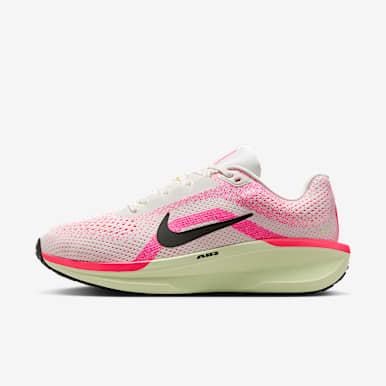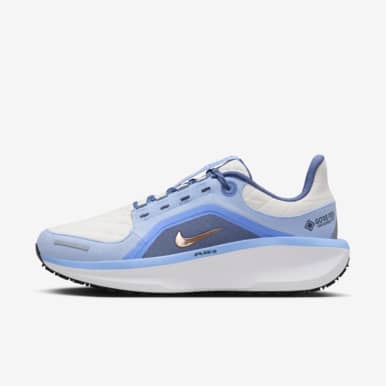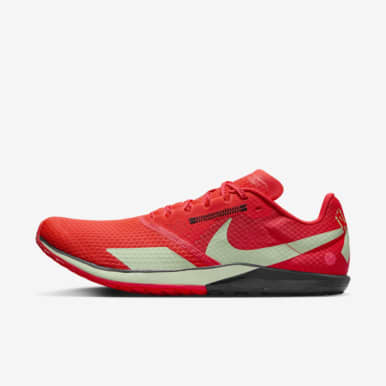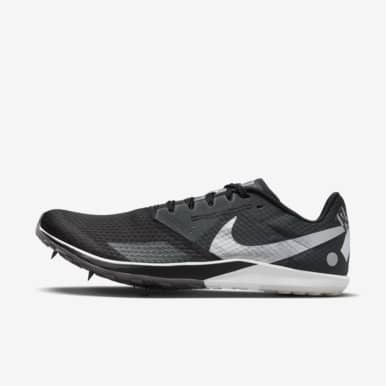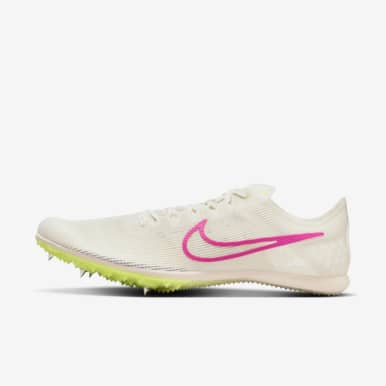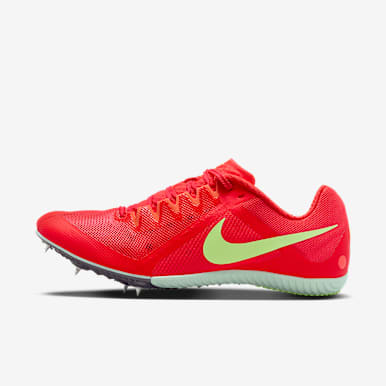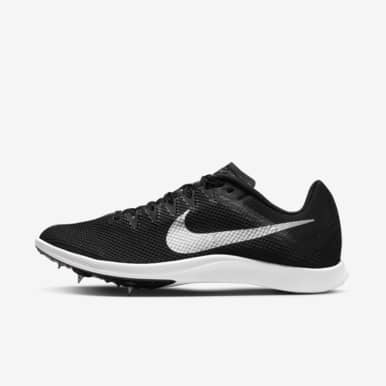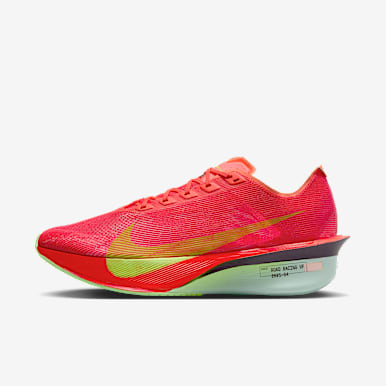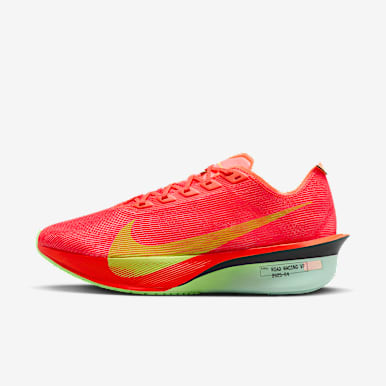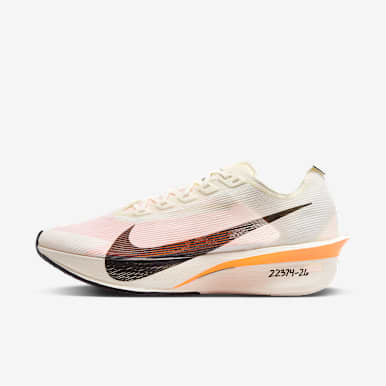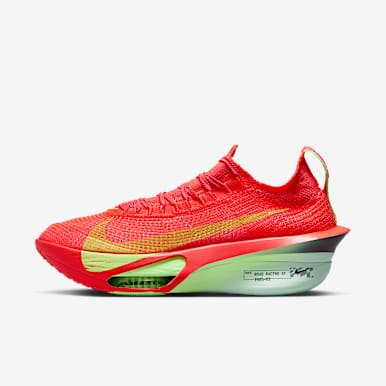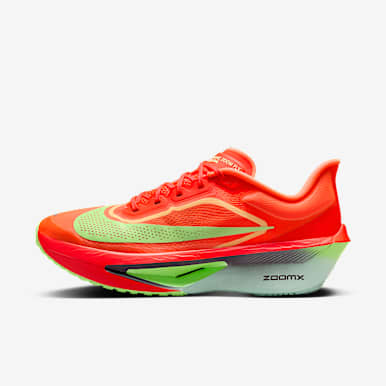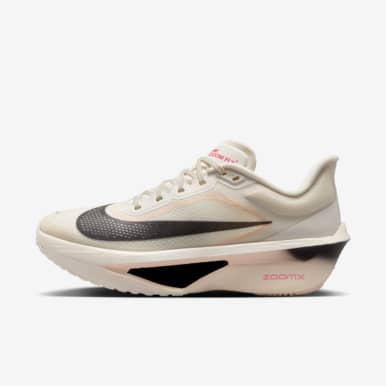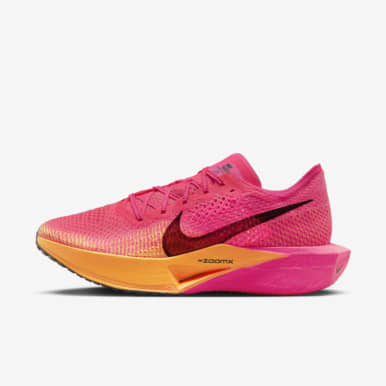What Nike Shoes Are Best for Long-Distance Running?
Buying Guide
Picking the best shoes for distance running depends on your preferred fit, the types of runs you do, and running surface.

Whether you’re just starting to log serious miles for your first race, or you’re lacing up for your seventh marathon, you demand a lot of your running shoes. Your mileage, run type, and run surface may fluctuate from week to week. Every run has a purpose, and so does every pair of running shoes. We’ll help you pick the best shoes for distance running based on your preferred fit, the types of runs you do, your running surface, and other factors that can come into play when you hit the road to reach your running goals.
The Best Shoes for Distance Running
There’s a shoe for you regardless of your running style or your training goal. Consider these selections based on different types of training runs and races.
Easy Long Runs
Easy long runs are a must for any runner and any training regime. A nice easy (or medium effort) long run helps build strength and improve aerobic base, and this type of run can help you recover from a hard run. These shoes are made for smooth and easy running.
On the Road
- Nike React Infinity: This line of shoes helps your feet feel serene as the miles pile up. It provides soft cushioning and a smooth ride with the highest level of stability. It also has a breathable Nike Flyknit upper with Nike Flywire technology for support and a generous helping of Nike React foam designed to absorb lots of impact to help keep you moving comfortably mile after mile (after mile).
- Nike Invincible: You can’t reach your goals if you’re not out there running. This one helps you grab serious miles with the responsive and light Nike ZoomX foam for protective cushioning and a full-length waffle outsole for traction. It also has a more stable upper to keep your feet secure for the long haul.
- Nike Miler: This line is all about stability and comfort for your daily training miles — Nike React cushioning gives you a blissful and responsive ride while the rocker geometry keeps you supported during all three phases of your stride. The simplified upper reduces weight and offers a secure fit.
On the Trail
- Nike Wildhorse: Nike React cushioning covered by a full rubber outsole helps reduce the impact of roots and rocks. The upper has enhanced ventilation and a collar designed to keep debris on the trail and not in your shoe.
- Nike Pegasus Trail: A mountain-bike-inspired Nike React outsole means a smooth and stable ride on the trails. The newly designed upper provides the classic Pegasus look with a secure, breathable ride for your miles.
Speed Runs
Mixing speed runs — like fartleks, tempos, or repeats — into your training regimen requires the right shoes. Speedwork improves your cardiovascular health and helps you sustain a faster pace longer to get you ready for race day, or maybe even a personal record.
On the Road
- Nike Pegasus: This shoe is a workhorse with wings. Its reconstructed upper features a softer layered mesh, expanded toe box, and improved midfoot lockdown that combines with springy Nike React foam and Zoom Air units in the forefoot for durable performance.
- Nike Zoom Fly: Faster training runs lead to better race times. A Nike React midsole and carbon fiber plate supply a durable and fast ride to hit those training goals. And the upper combines a comfortable sock-like fit and stable lockdown across the midfoot for chasing those times down. High energy return and durability mean you can train faster and more often.
On the Trail
- Nike Kiger: Lighter than the Wildhorse, the Kiger has a great bounce to it. It offers lightweight, responsive and rugged traction for speed to weave through the trails. Nke React foam and a forefoot Air Zoom unit are an ideal balance of speed and comfort. Multi-directional lugs improve stability even on technical terrain.
Race Day
Whether you’re lacing up to finish your first marathon or going for a personal record, all of your training comes down to race day. The right shoes can help you push through the last mile. It’s key to have race day shoes under your feet that you’ve broken in and feel confident in.
- Nike Vaporfly Next%: Keep cool while you chase down a new PB. A breathable perforated mesh upper and expanded toe box keep you comfortable for your next road race. Of course, the record-setting combination of Nike ZoomX foam and a full-length carbon plate keep each stride efficient.
- Nike Alphafly NEXT%: A healthy portion of Nike ZoomX foam and two Zoom Air pods provide absurd energy return and help keep your legs fresher longer. The Nike AtomKnit upper reduces weight, increases breathability, and limits water absorption. And a full-length, carbon fiber plate underfoot provides a propulsive sensation to help you push the pace.
Distance Running Shoe Features to Look For
Each part of a distance running shoe can be engineered differently to accommodate various gait patterns, weather conditions, running styles, and body weights. The best features for a first-time marathoner will be different from the best features for a seasoned distance runner looking to crush a PR. So, it can be helpful to consider each element and decide which features are most important for you.
Wider Toe Box
Many distance runners look for a wider toe box in their distance running shoes because a runner's foot can get wider after pounding the pavement mile after mile. A wider toe box can also facilitate better airflow around the toes and the ball of the foot to keep your feet cool on warm days, and it may help to accommodate a thicker sock if you run in cold weather.
Stable Heel Cup
It is not uncommon for your form to deteriorate to some degree at the tail end of a longer run. A stable heel cup can help you maintain proper alignment. You want a heel cup that is deep enough to avoid slippage. Runners who are heel strikers will want a little extra padding in this area.
Cushioned Midfoot and Forefoot
Reliable cushioning helps to absorb shock and keep your body bouncy when the miles start to take their toll. You may find cushioning features in different parts of the shoe. Midfoot cushioning is often helpful for those who overpronate and need more stability. Forefoot cushioning is often advised for those who land on the ball of the foot.
You also want to be sure that the cushioning is durable and stays responsive mile after mile. So, look for high-tech materials such as Nike ZoomX, a foam that was traditionally used in aerospace innovation. Now used in the Nike ZoomX midsole, it delivers 85 percent energy return (the greatest of any Nike foam) to give you a propulsive feeling without the extra weight.
Breathable Upper
Most distance runners will want to seek out a soft, breathable upper. Your feet are likely to get sweaty on long runs, and increased airflow can help reduce the risk of chafing and blisters. However, those runners who train in very cold or wet conditions may need to have at least one pair of shoes that have a more protective upper to protect their feet from the elements. To get the best of both worlds, look for Nike’s VaporWeave material. It’s not only crazy lightweight, but also strong and water-resistant.
Durable Outsole
The outsole of the shoe takes a beating during long runs. Look for distance running shoes that provide a grippy tread and plenty of traction for all weather conditions.
Shoe Weight
Lastly, you’ll want to consider the weight of the shoe. Lighter, faster racers looking for a podium finish will want a lighter shoe with less cushioning to enhance mobility and speed. Usually, these shoes have improved ground feel to facilitate responsiveness and energy return. On the other hand, athletes who have set a goal to simply finish a long race or to outpace their own personal record may find that extra cushioning is essential when finding a shoe to get them to the finish line.
Distance Running Shoe FAQs
Should my Distance Running Shoes Be the Same Size as my Casual or Dress Shoes?
Every runner has a running shoe fit and feel they prefer. Some runners go up half a size to account for foot swelling during longer runs. Other runners prefer a snug, sock-like fit. Which is right for you? The right fit is whatever feels best. And the only way to know for sure is to get out there and put some miles in.
Should I Race in my Training Shoes?
It’s common for runners to have multiple pairs of shoes for different types of runs. The majority of your runs will use training shoes — they’re typically slightly heavier with more cushion to absorb impact and help make all those miles easier on your legs. On the other hand, racing shoes are focused on performance and speed — think maximum energy return, lightweight uppers and propulsion in every step. Remember to break in your race-day shoes with a few fast runs to make sure the fit and feel is just right.
How Do I Know When My Distance Running Shoes Are Worn Out?
There are a few ways to tell if your shoes are worn out. First, check the tread. If you notice that the pattern has worn down (even just in certain sections of the outsole), then it is time to get a new pair. If you are starting to notice that the midsole feels flat or if you’re getting aches and pains after your workout, your shoes are probably worn out.
How Often Should I Plan to Replace my Running Shoes?
Experts generally advise that you get new running shoes every 300 to 500 miles (although some studies have suggested that high-quality running shoes can last over 600 miles). But training volume varies substantially from one runner to the next. As a general guide, a distance runner who logs 20–39 miles per week should replace their shoes every 4–6 months, while a runner who logs 40 or more miles per week should replace them every 2–3 months. To make your shoes last longer, consider getting two (or more) pairs, and then alternate the pair that you use for training. And never wear your running shoes for activities other than running.
What if I Buy a Distance Running Shoe and It Doesn’t Work?
It is important to find the perfect shoes for long-distance runs — your training regimen and race day depend on it. And there’s no substitute for testing the shoes on a long run, so Nike gives you 60 days to try them out. Put them to the test, take them on a run. If you don’t like them, return them. Miles and all.
If you still have questions about Nike running shoes, reach out to one of the Nike Experts through the Nike App.
